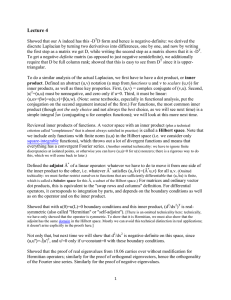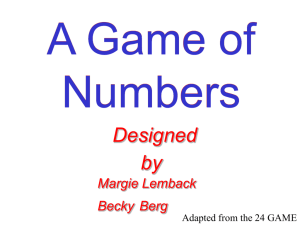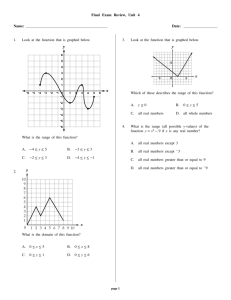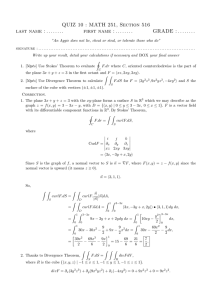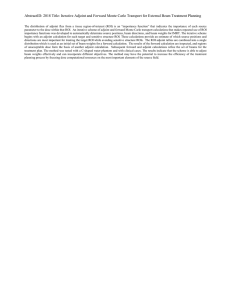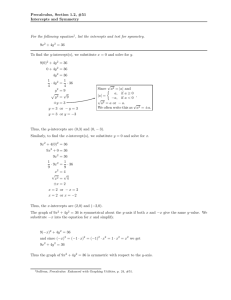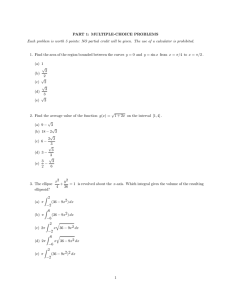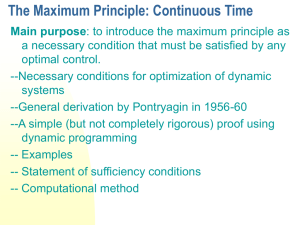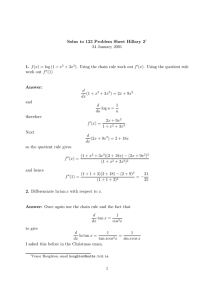Extra Problems - Math 311-200
advertisement
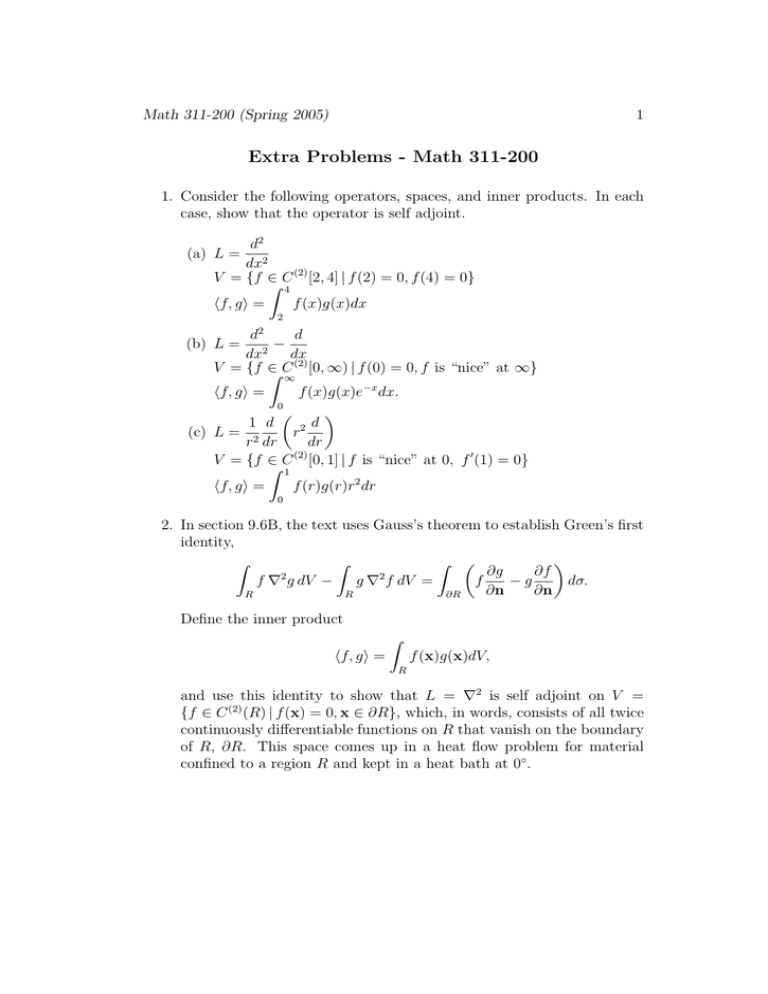
Math 311-200 (Spring 2005)
1
Extra Problems - Math 311-200
1. Consider the following operators, spaces, and inner products. In each
case, show that the operator is self adjoint.
d2
dx2
(2)
V = {f ∈
[2, 4] | f (2) = 0, f (4) = 0}
ZC
4
hf, gi =
f (x)g(x)dx
(a) L =
2
2
d
d
−
2
dx
dx
(2)
V = {f ∈
C
Z ∞ [0, ∞) | f (0) = 0, f is “nice” at ∞}
hf, gi =
f (x)g(x)e−x dx.
0
1 d
2 d
r
(c) L = 2
r dr
dr
(2)
0
V = {f ∈
Z C [0, 1] | f is “nice” at 0, f (1) = 0}
(b) L =
1
f (r)g(r)r2 dr
hf, gi =
0
2. In section 9.6B, the text uses Gauss’s theorem to establish Green’s first
identity,
Z
Z
Z ∂f
∂g
2
2
f ∇ g dV −
g ∇ f dV =
f
−g
dσ.
∂n
∂n
R
R
∂R
Define the inner product
Z
hf, gi =
f (x)g(x)dV,
R
and use this identity to show that L = ∇2 is self adjoint on V =
{f ∈ C (2) (R) | f (x) = 0, x ∈ ∂R}, which, in words, consists of all twice
continuously differentiable functions on R that vanish on the boundary
of R, ∂R. This space comes up in a heat flow problem for material
confined to a region R and kept in a heat bath at 0◦ .
3. Use the method of Frobenius in the following differential equations to
find the indicial equation, the recurrence relation, and the the first few
terms of the series solution.
(a) x2 y 00 + xy 0 + (x2 − 1)y = 0.
(b) 9x2 y 00 + (9x2 + 2)y = 0.
(c) 25x2 y 00 + 25xy 0 + (x4 − 1)y = 0
2

